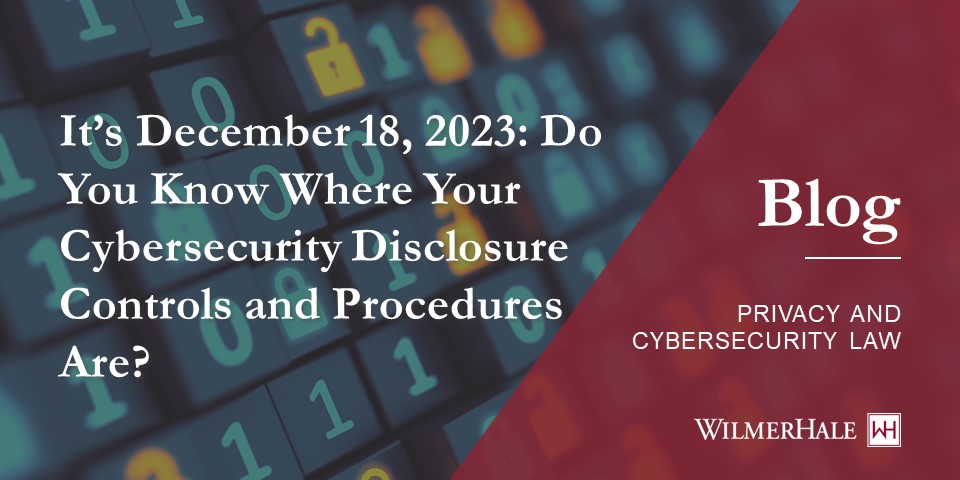
Navigating Transparency Requirements: Cybersecurity Disclosure Laws
The digital landscape is rife with cyber threats, making transparency in cybersecurity practices crucial. Cybersecurity disclosure laws have emerged to ensure that organizations promptly and accurately communicate security incidents to stakeholders. In this article, we explore the significance of these laws, their implications, and the evolving landscape of cybersecurity disclosure.
The Importance of Cybersecurity Disclosure Laws
In an era where data breaches and cyberattacks are prevalent, the importance of cybersecurity disclosure laws cannot be overstated. These laws are designed to enhance transparency and accountability by compelling organizations to promptly inform stakeholders about security incidents. This proactive approach aims to minimize the impact of breaches, protect affected individuals, and maintain trust in digital ecosystems.
Mandatory Reporting and Timely Disclosures
One key aspect of cybersecurity disclosure laws is the requirement for mandatory reporting of security incidents. Organizations must promptly notify relevant parties, such as customers, regulatory bodies, and law enforcement, about the occurrence of a data breach or cybersecurity incident. Timely disclosures enable affected individuals to take necessary precautions and facilitate a coordinated response to mitigate the consequences.
Scope and Applicability of Disclosure Laws
Cybersecurity disclosure laws vary in scope and applicability. Some laws are industry-specific, while others apply across sectors. The specifics may include the types of data covered, the threshold for reporting incidents, and the entities subject to the laws. Understanding the nuances of these regulations is essential for organizations to ensure compliance and effective incident response.
Legal and Regulatory Landscape
The legal and regulatory landscape for cybersecurity disclosure is dynamic and subject to continuous evolution. Governments and regulatory bodies worldwide are recognizing the need for comprehensive cybersecurity frameworks. Organizations operating across borders must navigate a complex web of regulations, emphasizing the importance of staying informed about global developments in cybersecurity disclosure laws.
Challenges in Compliance and Enforcement
While cybersecurity disclosure laws play a critical role, challenges exist in ensuring universal compliance and effective enforcement. Varying regulatory requirements across jurisdictions, the complexity of cyber threats, and the rapid pace of technological advancements pose challenges for both organizations and regulators. Striking a balance between stringent requirements and practicality is an ongoing challenge in the cybersecurity landscape.
Impact on Public Trust and Reputation
Transparency in cybersecurity practices directly influences public trust and organizational reputation. Prompt and honest disclosure of security incidents demonstrates accountability and a commitment to addressing cybersecurity challenges. Conversely, mishandling or delayed disclosure can lead to erosion of trust, reputational damage, and potential legal consequences. Organizations must recognize the symbiotic relationship between cybersecurity disclosure and maintaining a positive public image.
Coordination with Incident Response Plans
Effective cybersecurity disclosure is intricately linked with robust incident response plans. Organizations need to integrate disclosure processes seamlessly into their broader incident response frameworks. This includes defining roles and responsibilities, establishing communication protocols, and conducting regular drills to ensure a swift and coordinated response when a security incident occurs.
Technological Advances and Incident Detection
As technology evolves, so do the methods and tools available for incident detection and response. Organizations are leveraging advanced technologies such as artificial intelligence and machine learning to enhance their cybersecurity posture. Integrating these technologies into incident detection systems enables quicker identification of security incidents, aligning with the goal of timely cybersecurity disclosures.
Educating Stakeholders on Cybersecurity Transparency
Educating stakeholders, including employees, customers, and partners, on the importance of cybersecurity transparency is a proactive measure. Organizations should communicate their commitment to cybersecurity, the steps taken to safeguard data, and the processes in place for incident response and disclosure. This transparency fosters a culture of shared responsibility and enhances the collective resilience against cyber threats.
Looking Ahead: Evolving Cybersecurity Landscape
The future of cybersecurity disclosure laws will likely witness further refinement and expansion. Policymakers, cybersecurity experts, and industry stakeholders must collaborate to address emerging challenges, such as the increased sophistication of cyber threats, the impact of emerging technologies, and the globalization of digital ecosystems.
In conclusion, navigating cybersecurity disclosure laws is integral to fostering a secure and transparent digital environment. Organizations play a pivotal role in upholding these laws, not just as compliance requirements but as essential components of a proactive cybersecurity strategy. To learn more about cybersecurity disclosure laws, visit Cybersecurity Disclosure Laws.



